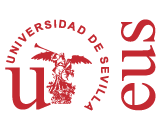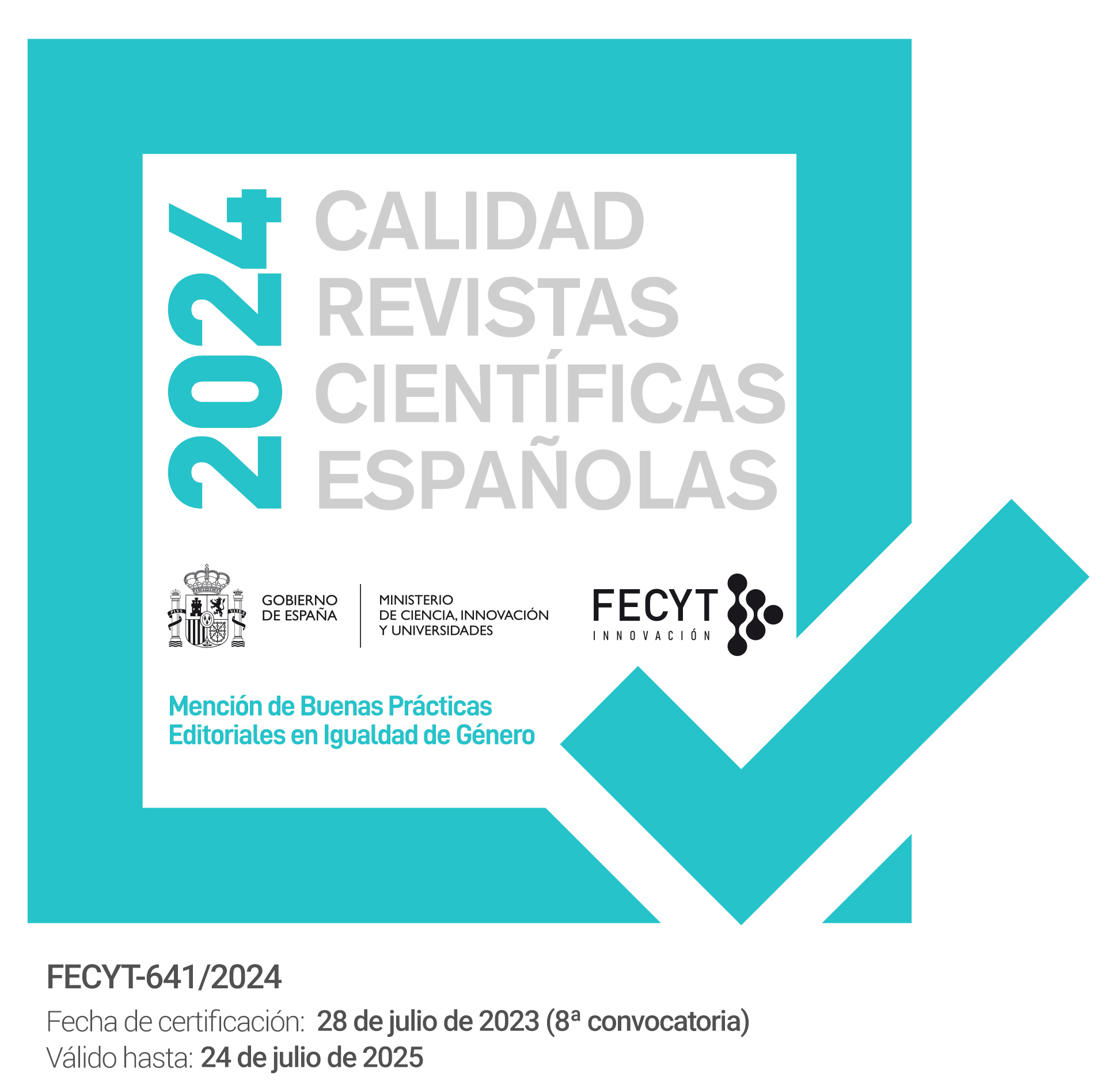ISSN: 1132-0265
e-ISSN: 2253-8321
DOI: http://dx.doi.org/10.12795/PH
Style guidelines
Since the magazine is published in both electronic and paper versions, during the layout process many of the personal style marks disappear, so please follow only the following rules and avoid your own.
- Format and Papers Presentation
Font type: Brill
Font size: 12 p. (Foot notes: 10 p.)
Margins: upper and lower: 2.5 cm.; right and left: 3 cm.
Line spacing: 1.5 (Foot notes: single spacing).
Indentation: tab key at 0.5 cm. in the first line of each paragraph.
Text alignment: justified.
Boldness should be avoided. Italics are used instead of underlining where necessary (except in URLs).
- Headings: without indentation or tabulation, are structured as follows:
1. Heading [bold small caps]
1.1. Subheading 1 [bold, small rounded]
1.1.1. Subheading 2 [simple rounded]
1.1.1.1. Subheading 3 [italics]
- Serialisation
Serialisation may be carried out using numbers. Numbers are used for sequential or chronological order, written in Arabic numerals, and followed by a period 1.
- Tables and graphs
Tables and figures should be numbered with Arabic numerals (bold) according to the order in which they are mentioned in the text (Table 1, Figure 1). They must also include a clear and precise title as a header at the top of the image (cursive).
For example:
Table 1
Diagram of pronominal use
They are encoded with font size 10 and separated from the previous and later texts by a line break which is centred and without elaborate style marks, since they will disappear in the layout process.
In the case of explaining abbreviations or referencing a protected source, it is valid to include a note. For the use of materials with reproduction rights, it is necessary to obtain authorisation of the owner of said rights.
The illustrations or images that have been included in the text are also sent as ADDITIONAL FILES in JPG or TIFF format, each image will be in an individual file. It has been checked that the image has a 300 dpi resolution. No graphic design programmes ―Photoshop, Corel or similar― have been used to increase the resolution. Color or black and white images are accepted, although in the printed version these will appear exclusively in black and white.
- Standardisation of citations and notes
1. The footnote markers will be indicated by Arabic numerals in superscript placed immediately after the sentence or word to which they refer, without separation space. They will not go in parentheses and will precede the punctuation mark (in the case of an article in English they will go behind the punctuation mark). These citations will never be used for bibliographic references, but as clarification, explanation or additions to the content of the text.
2. Citations less than four lines in length will be included in the text in quotation marks. Quotations of four or more lines will be separated from the body of the text by a line break at the beginning and end of the citation, and by a 2 cm bleed on the left. The font size 11 will be used for the citation text. Omissions within the quotations will be marked by three points in brackets: [...]. It will not be necessary to indicate omissions at the beginning and at the end of the text with brackets. There will be no full stop at the end of the citation, but this will go after the reference of the work.
When the citations are in the text of a footnote, what is indicated above will be followed, always using font size 10.
3. Bibliographic citation: citations that appear in the text will follow the following system: surname of the author, separated by a colon, a space and the year of publication; this, in turn, will be separated from the page number by a colon and a space, all in parentheses, for example: (Lapesa, 1980: 214).
Two authors : Depending on the language of the article/document, "y" or "&" respectively must be used to join the names of the authors. For example:
- Text reference: Gutiérrez y Rojas (2013). / Börjars & Burridge (2001).
- Paraphrased reference: (Gutiérrez y Rojas, 2013). / (Börjars & Burridge, 2001).
Up to three authors:
- Text reference: Castiblanco, Gutiérrez y Rojas (2013). / Smith, T., Jones, F. & Davies, S. (2014).
- Paraphrased reference: (Castiblanco, Gutiérrez y Rojas, 2013). / (Smith, T., Jones, F. & Davies, S. 2014).
More than three authors:
The surname of the first author is always referenced followed by et al.
- Text reference: Rojas et al. (2013). / Smith et al. (2014).
- Paraphrased reference: (Rojas et al., 2013). / (Smith et al., 2014).
If a footnote is referenced, it will be marked by n., for example: (Tovar 1987: 43, n. 3). If several works are referenced, they will be ordered chronologically and separated by semicolons, for example: (Tovar 1961: 36; Chomsky, 1965). If the citation includes several pages, the number of the first page and the final page will be given, separated by a hyphen: (Tovar, 1961: 311-318). The use of section or sections (s and ss.) will be avoided as much as possible. The page number is not included if the reference is to the whole work, for example: (Tovar, 1987). If the reference refers to several places (pages, notes) within the same work, the page or note numbers will be indicated separated by commas and space, for example: (Cano Aguilar, 1989: 465, 467, 470). When the reference is included in the syntax of the text, the year and number(s) of the page(s) appear in parentheses, but not the author's surname, for example: “as Tovar points out (1961: 65)”.
In the case of references to classical works, the book number, chapter and paragraph (or song and verses for works in verse) will be added in Arabic numerals separated by full stops, for example: (Homero, Od. 9.1). If a translated literal quote is included, the name of the translator and the edition will be indicated, for example: “Los habitantes de las montañas fueron los que iniciaron esta situación de anarquía” (Strab. 3.3.5. Trad. Gómez Espelosín, 2007).
Important classics such as the Bible or the Koran are not listed as references, but they should be mentioned in the text.
4. Abbreviations and acronyms: Latin abbreviations will be marked in italics and lowercase (vid., ibíd., et al., c., cfr.,). Initials will be capitalised (UN). The acronyms equivalent to the titles of some works will be indicated in capital letters and italics (GRAE, DRAE, CORDE).
5. A fixed abbreviated bibliographic referencessystem will be used; and they will be accompanied by a final list of complete bibliographical references arranged alphabetically by author's surname. The complete bibliographical references will in no case go to the page footer.
6. The section "REFERENCES" distinguishes the true reference works (journal articles, book chapters, books, etc.) y lo que son sources. If you have used texts or documentary sources, they must appear under their own heading ("DOCUMNETARY SOURCES"), after "REFERENCES", and also ordered alphabetically.
- References
Complete bibliographical references must adhere to the following models in accordance with APA standards [consult the following link: Reference examples (apa.org)]
All documents referenced in the text should be included in the bibliography. This must be developed in strict alphabetical order according to the surname of the author(s).
- If including a work of a single author as well as shared work of that same author along with other authors, first, the single author is indicated and then the shared work.
For example:
Karlsson, L. (2008). Turning the kaleidoscope – (E)FL educational experience and inquiry as auto/biography. University of Helsinki Language Centre.
Karlsson, L., Kjisik, F. & Nordlund, J. (1997). From Here to Autonomy. Helsinki University Press. - When referencing several works by the same author, the name of the author is referenced in every entry and then the works by year of publication. These should be indicated in chronological order (from the oldest to most recent).
For example:
Benson, P. (2001). Teaching and researching autonomy in language learning. Longman.
Benson, P. (2011). Language learning and teaching beyond the classroom: An introduction to the field. In P. Benson and H. Reinders (Eds.), Beyond the Language Classroom (pp. 7-16). Palgrave Macmillan. - If there are multiple references by the same author from the same year, the works are specified in alphabetical order.
For example:
Little, D. (1997a). Language awareness and the autonomous language learner. Language awareness, 6(3/4), 93-104.
Little, D. (1997b). Language Learner Autonomy: Some Fundamental Considerations Revisited. Innovation in Language Learning and Teaching, 1(1), 14-29.
Little, D. (2000). Learner autonomy – why foreign languages should occupy a central role in the curriculum. In S. Green (Ed.), New Perspectives on Teaching and Learning Modern Languages, (pp. 24-45). Multilingual Matters.
References according to document type
Monographs and collective volumes
- One author:
Surnames, first initial of author’s name (year). Title. Publication.
For example:
Sapolsky, R. M. (2017). Behave: The biology of humans at our best and worst. Penguin Books. - In the case of multiple authors:
Surnames, first initial of 1st author’s name, Surnames, first initial of 2nd author’s name, Surnames, first initial of 3rd author’s name (Year). Title. Publication.
For example:
Speedy, J. & Wyatt, J. (2014) (Eds.). Creative Practitioner Inquiry in the Helping Professions. Sense Publishers. - More than 20 authors:
Tobler, R., Rohrlach, A., Soubrier, J., Bover, P., Llamas, B., Tuke, J., Bean, N., Abdullah-Highfold, A., Agius, S., O'Donoghue, A., O'Loughlin, I., Sutton, P., Zilio, F., Walshe, K., Williams, A. N., Turney, C. S. M., Williams, M., Richards, S. M., Mitchell, N. ... Cooper, A. (2017). Aboriginal mitogenomes reveal 50,000 years of regionalism in Australia. Nature, 544(7649), 180-184. - Book with editor:
Surname, A. A. (Ed.). (Year). Title. Publication.
For example:
Speedy, J. & Wyatt, J. (Eds.). (2014). Creative Practitioner Inquiry in the Helping Professions. Sense Publishers.
Book chapter or contribution to collective work
A chapter of a book is referenced when the book has an editor, i.e., the book consists of chapters written by different authors.
Surname, A. A. (Year). Title of the chapter or entry. In A. A. Surname (Ed.), Book Title (pp. xx-xx). Publication.
For example:
Martin, A. (2006). Literacies for the digital age. In A. Martin & D. Madigan (Eds.), Digital literacies for learning (pp. 3-25). Facet.
Journal article
Apellido, A. A. (Fecha). Título del artículo. Nombre de la revista. Volumen(Número), pp-pp. http://DOI o http://URL [if any]
For example:
Alam, K., & Imran, S. (2015). The digital divide and social inclusion among refugee migrants: A case in regional Australia. Information Technology & People, 28(2), 344-365. https://doi.org/10.1108/ITP-04-2014-0083
Dissertations and Theses
Author, A. A. (year). Thesis title [doctoral dissertation/master’s thesis]. Name of institution. http://URL [if any]
For example:
Pierrehumbert, J. B. (1980). The phonology and phonetics of English intonation [Doctoral dissertation]. Massachusetts Institute of Technology, Dept. of Linguistics and Philosophy.
- If the thesis is in a file or in a database on the Internet, said file or database is indicated along with its document number:
For example:
Andrea, H. (2014). Effective networked nonprofit organizations: Defining the behavior and creating an instrument for measurement (Doctoral dissertation). https://etd.ohiolink.edu/ - If the thesis is not published:
For example:
Curry, J. (2016). A guide to educating single mothers about early gang intervention and prevention [Unpublished Master’s thesis]. Pacific Oaks College.
Specific docucents taken from a website/web pages
Surname, A. A. (Date). Document title. DOI (If no DOI, indicate URL address)
Examples:
Schiraldi, G. R. (25 March 2019). The post-traumatic stress disorder sourcebook: A guide to healing, recovery, and growth. DOI: 10.1036/0071393722
Carroll, L. & Gilroy, P. J. (10 September 2002). Transgender Issues in Counselor Preparation. Counselor Education & Supervision, 41, 233-242. http://www.counseling.org
Texts and documentary sources
They are related in a different "REFERENCES" section under the heading of "DOCUMENTARY SOURCES" and follow the same guidelines as those followed in the monographs.
- If it is the original edition of a work:
For example:
García de Palacio, Diego (1587): Instrucción náuthica. Pedro Ocharte. - If you have not used the original edition of the work but it is a later version (reissue) you have to specify the editing, translator, printing details, etc.:
For example:
Shakespeare, W. (2004). Hamlet (J. M. Valverde, ed. & trad.). Planeta (original published in 1609).
Platón. (1996). El banquete (M. Sacristán, ed. & trad.). Icaria Literaria (original published c. 385-370 b. C.).
Dictionaries and other lexicographic sources
- In print:
Author A. A. (Date). Dictionary/Encyclopedia entry. In A. Editor & B. Editor (Eds.), Name of dictionary/encyclopedia (edition, if not the first). Publisher.
For example:
Hughes, J. M., Michell P. A., & Ransom, W. S. (Eds.). (1992). Zucchini. In The Australian concise Oxford dictionary (2nd ed.). Oxford University Press. - Online stable or archived version:
Author A. A. (Date). Title of entry. In E. E. Editor (Ed.), Name of dictionary/encyclopedia. URL.
For example:
Butler, S. (Ed.). (2017). Zombie. In Macquarie dictionary (7th ed.). https://search.credoreference.com/content/entry/macqdict/zombie - If you have used acronyms or abbreviations in the body of the text, they have to be developed:
Examples:
DCECH = Coromines, Joan/Pascual, José Antonio (1974): Diccionario Crítico Etimológico Castellano e Hispánico. Gredos.
BA = Lirola Delgado, Jorge (dir./ed.)(2004): Biblioteca de al-Andalus. Almería: Fundación Ibn Tufayl de Estudios Árabes, 2004-2012 (7 vols.).
Reviews
Author, A. A. (year). review of the book: “Títle” [review of the book Title of the book by A. A. Author]. Journal/ /blog/website. http://xxxxxx.
For example:
Benavides, S. (2019). Review of the book: “Viaje al corazón de Cortázar” [review of the book Viaje al corazón de Cortázar by J. C. Rincón]. El Espectador. https://bit.ly/3dTiZWS







